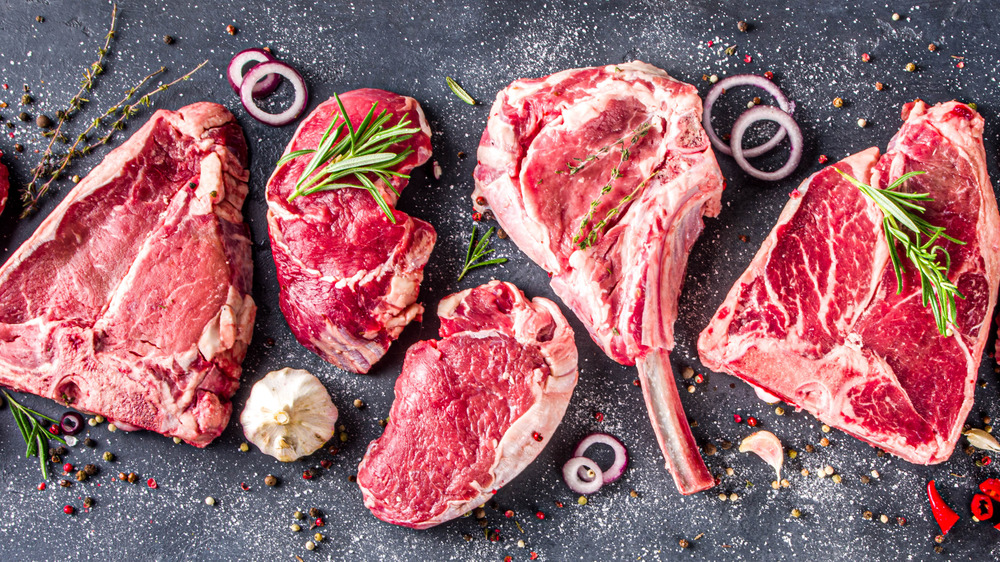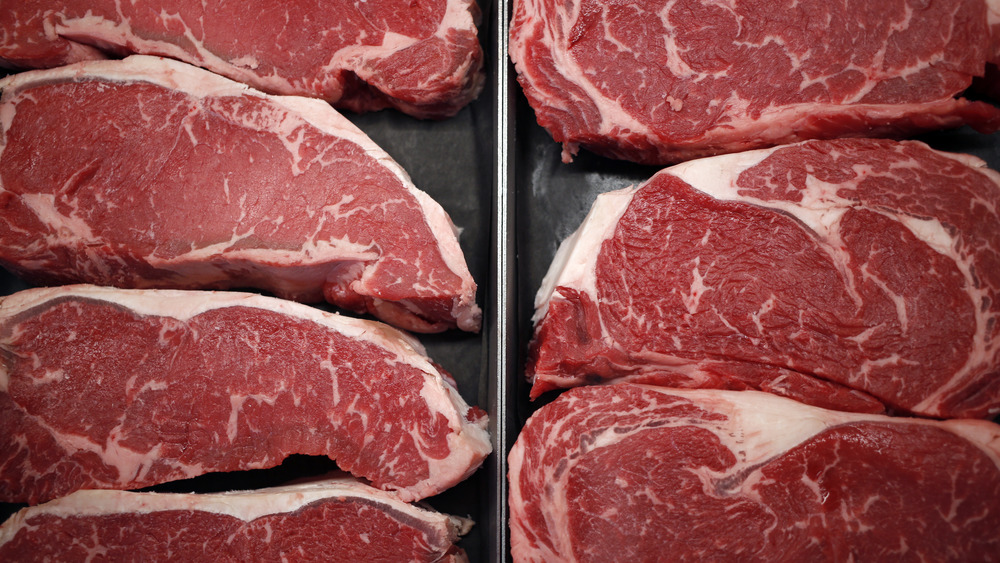The Real Difference Between Ribeye And Prime Rib
If you grew up in a meat-loving household, you probably learned early on that not all cuts of steak are equal. Steak aficionados everywhere will tell you that a different cut warrants different cooking and seasoning techniques, and can be an experience almost as different as eating an entirely different food. Just like chicken wings and chicken salad or tofu versus edamame, a rib eye and a prime rib only share a similar origin.
The first thing you should know is that you're lucky to be eating either of these great cuts of beef. Both cuts are considered high-end, although this depends on the grade of the meat it's sourced from. Cut from the "prime rib" area of the animal, both entrees feature great textures and flavors with extra marbling (via the Chicago Steak Company). The big difference you'll find is that a cut of prime rib is sliced after a whole roast is slow cooked, and a rib eye steak is cut while the product is still raw and cooked individually. Prime rib is typically slow roasted with au jus, whereas rib eye is usually grilled to order.
Similar steak names but a whole different experience
Another way to think of prime rib is the fatty and flavorful part of the cow that doesn't get much of a workout (via The Spruce Eats). Prime Rib is usually an occasional or treat food as it tends to be rather costly. Additionally, prime rib may be labelled as a beef, bone-in rib roast at your local grocery. And while we spend a lot of time talking up the fatty flavor of this roast, you don't want to purchase one that's more fat than meat. Furthermore, try making your own prime rib using a traditional method before branching out.
Rib eyes will be sold at your local butcher or grocer as individually sliced steaks, although they may be different sizes. You may also see this cut called Delmonico, Spencer, beauty steak, sarket steak, or Scotch fillet (via Omaha Steaks). The taste can be described as rich and buttery while also tender, as it's from the same butchering area of the animal; however, rib eyes will not typically be as soft as a slow-cooked prime rib. Additionally, a rib eye differs from other grilling cuts in that it actually features three different portions of meat. Each of these areas will have a slightly different taste and texture — kind of like your sampler platter of high end steaks.
While there are many differences, one thing we know for sure — both are rib eyes and prime rib are absolutely delicious.

